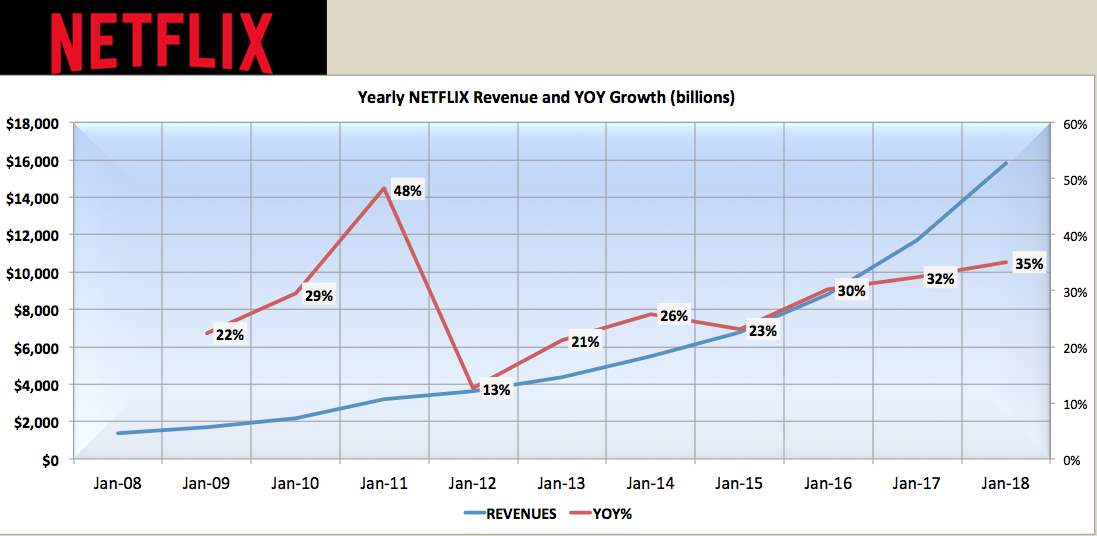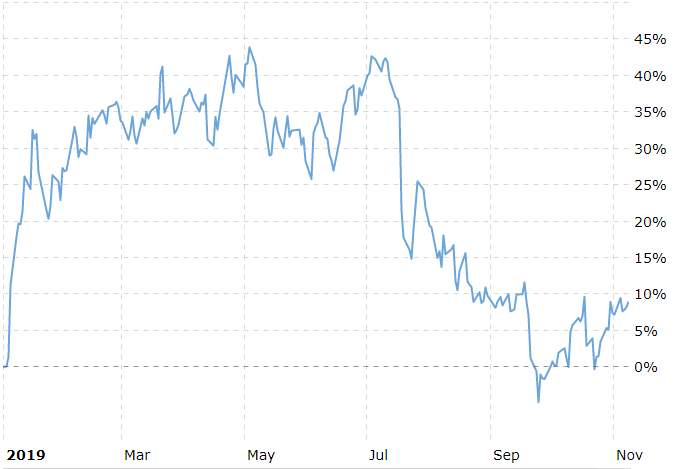Analysis of Netflix’s Financial Statements
| ✅ Paper Type: Free Essay | ✅ Subject: Finance |
| ✅ Wordcount: 1308 words | ✅ Published: 03 Nov 2020 |
The company I have chosen to do my analysis for this project on is Netflix. Marc Randolph and Reed Hastings founded the company Netflix in 1997. The company started in California and has grown to become the world’s leading streaming service. Netflix has become one of the first streaming services that have been able to come up with their own content. I believe it’s because of all the capital they have been able to accumulate, due to their customer’ subscriptions, which start at $9 and go up to $16 for premium content. Netflix has been able to create content with A-list celebrities, comedians, chefs, you name it and they have collaborated with for original content. I keep insisting on “content” because this is a huge cost, but unfortunately, a need for the business to continue. Popular shows, such as Friends require huge licensing fees, which only allow them to play the content for a limited time. In regards to bandwidth, sites like fortune.com, state that Netflix’s services alone constitute about 15% of the entire world’s Internet bandwidth. That isn’t bad for a company that originally delivered DVDs by snail mail. Reed provided the capital and invested $2.5 million into the startup in cash. Inspired by Amazon’s e-commerce model, the pair explored various portable items they could use to sell over the Internet in a similar fashion. After initially considering and rejecting VHS cassettes, they settled on DVDs as the perfect product. Netflix launched in April of 1998 and became the world’s first online DVD rental and merchant. Per Allen, “the company took advantage of the rapid growth in the DVD rental market, the internet and e-commerce by providing a service that the traditional brick-and-mortar retailers, such as Blockbuster, could not compete with.” (Allen, et al., 2014)
Aside from so much competition, the company is still very profitable. As you can see from Figure 1, the company has had increased revenue year over year and the only fall was due to the fact that they fell out of favor with subscribers in 2012 when it tried to split its business into separate DVD and streaming movie services and raise prices considerably.

Figure 1. Yearly Netflix Revenue and YOY Growth. Data from the Revenue and Year over Year Growth from Macrotrends (2019)
Netflix’s current ratio is 1.50 %, which is a firm number for any company. Acceptable current ratios vary from industry to industry and are generally between 1.5% and 3% for healthy businesses. If a company’s current ratio is in this range, then it generally indicates good short-term financial strength. Netflix’s Shareholder Equity is very healthy, as it is 20%. According to Forbes, the average return is only 10-14%. “Market analysts and investors prefer to see a good, stable balance between the amount of retained earnings that a company pays out to investors in the form of dividends and the amount retained to reinvest back into the company. Shareholder equity is an important metric in determining the return being generated versus the total amount invested by equity investors. For example, ratios like return on equity (ROE), which is the result of a company’s net income divided by shareholder equity, is used to measure how well a company’s management is using its equity from investors to generate profit.” (Hayes, 2019) The revenue trend for Netflix has been positive over the 10-year period I analyzed. They have had double-digit growth over the same period as well. Growth occurred even in 2012, which has been their least profitable year, but they were still able to grow by 13%.
Netflix continues to battle with competitors for market share. Companies such as Hulu, Google TV, Apple TV, various cable companies and others are also starting their own streaming services. Since there are more options for consumers, Netflix no longer has as strong of a hold on the market. In acquiring content for streaming, Netflix typically licenses content on a fixed cost basis (Form10-K, 2018). With this being said, movie studies have reaped the benefits of the competition having these streaming companies pay a premium for shows that have long been subscriber favorites. With Netflix already starting to expire, Netflix will have to deal with rival companies trying to pounce for content. According to their Balance Sheet, Netflix’s content costs have jumped to $15 billion over the past several years, up from the $7.6 billion reported previously in 2016. They do expect growth however, the company expects that growth will come mainly from streaming and per the shareholder letter; they expect to hit their operating margin goal of only 13%.
Again, as you can see from Figure 2, with data gathered from their financials, Netflix profits continue to grow. However, there is an immense concern about license expirations that will have a huge cost factor in the next coming years, as the licenses previously acquired are set to expire. With such continued growth, the Gross Profit Margin trend for 2018 is 38%.

Figure 2. Yearly Netflix Revenue and YOY Growth. Data from the Revenue and Year over Year Growth from Macrotrends (2019)
After analyzing the Cash Flow Statement, it is inescapable to notice the huge jump year over year of the Liabilities. This has to do with the content licensing that I wrote about earlier in the paper. A lot of the licensing that they had was set to expire in January and October of this year and with popular shows such as Friends as part of the expirations, subscribers were up in arms. Friends first hit Netflix in 2015. “The sitcom’s enduring popularity has made it one of the streamer’s most important licensing deals. Netflix’s chief content officer, Ted Sarandos, told The Hollywood Reporter on Monday that the show’s impending departure was a rumor, and Netflix’s announcement seems to confirm that for now. but it’s very likely that the beloved sitcom will, indeed, drop from Netflix’s roster in 2020, as Warner Media launches its own streaming service.” (Bradley, 2018)
There’s no question that Netflix has been one of the best stocks on the market over the last decade. Since the beginning of 2012, when shares were left for dead following the failed Qwikster spinoff, Netflix stock has surged more than 2,500%. The company has ridden the global cord-cutting wave and become the undisputed streaming champion with more than 150 million subscribers around the world. But more recently, the stock has shown signs of fatigue. In its second quarter, the company reported its first domestic subscriber loss since 2011, setting off alarm bells, as overall subscriber growth was also significantly slower than expected. The company said it added just 2.7 million members instead of the 5 million it had projected. As a result of this and fears about rising competition, Netflix stock is down about 40% from its all-time high last summer of $423 a share. Plenty of investors are wondering if the current sell-off is a buying opportunity. In my opinion, this would have been a great investment in earlier times, but as my paper states there is a lot of competition that is waiting to pounce once Netflix’s licenses expire. Once very profitable, this is one expensive company to invest and stay vested into for the unforeseeable future. In Figure 3 you can see from the stock price history below, you can see the anxiousness of investors and their decision to start selling and cash out while they still can.

Figure 3. Yearly Netflix Revenue and YOY Growth. Data from the Revenue and Year over Year Growth from Macrotrends (2019)
References
- Allen, G., Feils, D., & Disbrow, H. (2014). THE RISE AND FALL OF NETFLIX: WHAT HAPPENED AND WHERE WILL IT GO FROM HERE? Journal of the International Academy for Case Studies, 20(1), 135-143. Retrieved from http://0-search.proquest.com.patris.apu.edu/docview/1647822304?accountid=8459
- Hargrave, M. (2019, June, 20) Return on Equity Retrieved from: https://www.investopedia.com/terms/r/returnonequity.asp
- Bradley, L. (2018, December 4) Friends Will Stay on Netflix Throughout 2019—But There’s a Catch Retrieved from: https://www.vanityfair.com/hollywood/2018/12/friends-staying-on-netflix-through-2019
Cite This Work
To export a reference to this article please select a referencing stye below:
Related Services
View allDMCA / Removal Request
If you are the original writer of this essay and no longer wish to have your work published on UKEssays.com then please click the following link to email our support team:
Request essay removal


